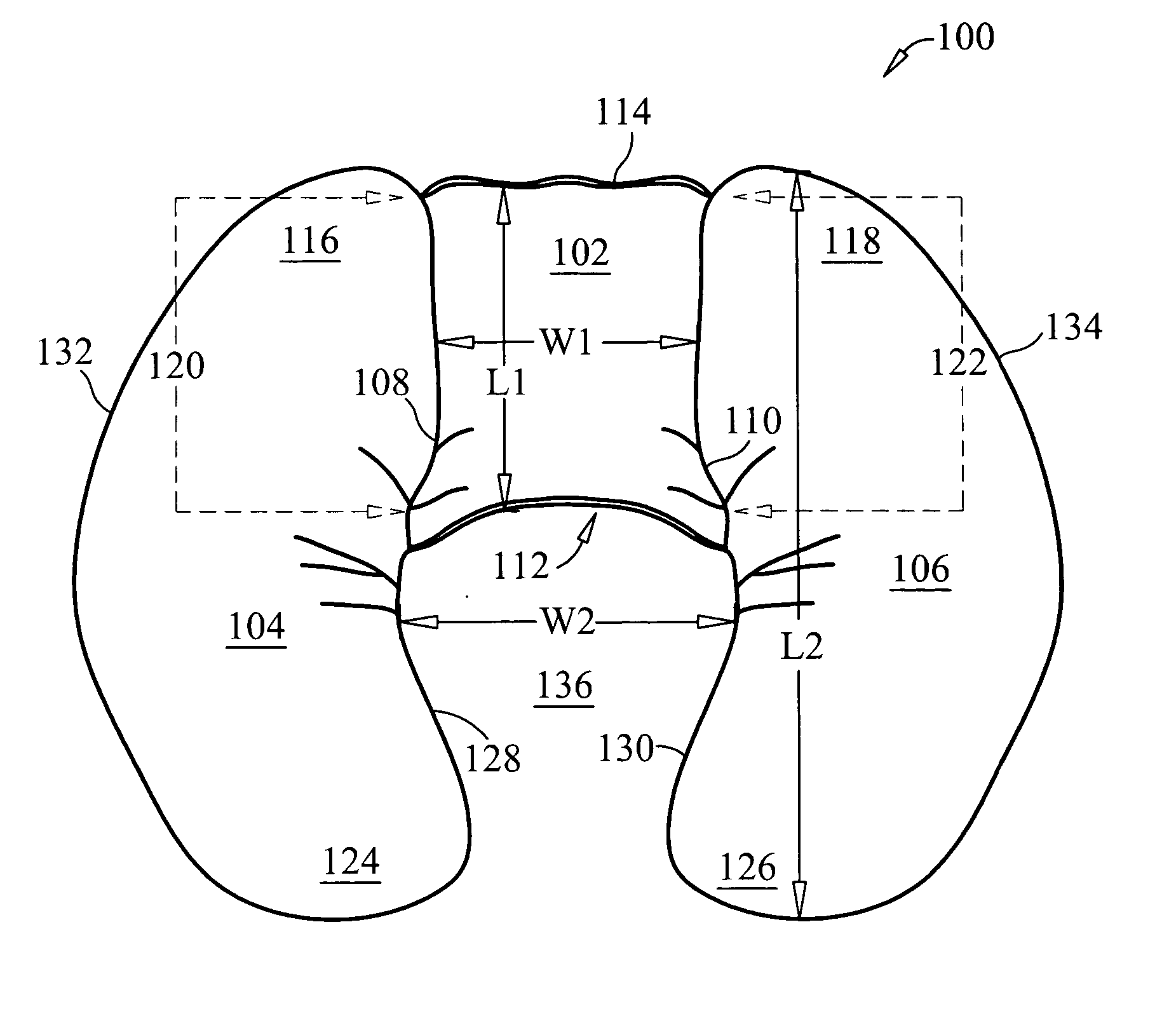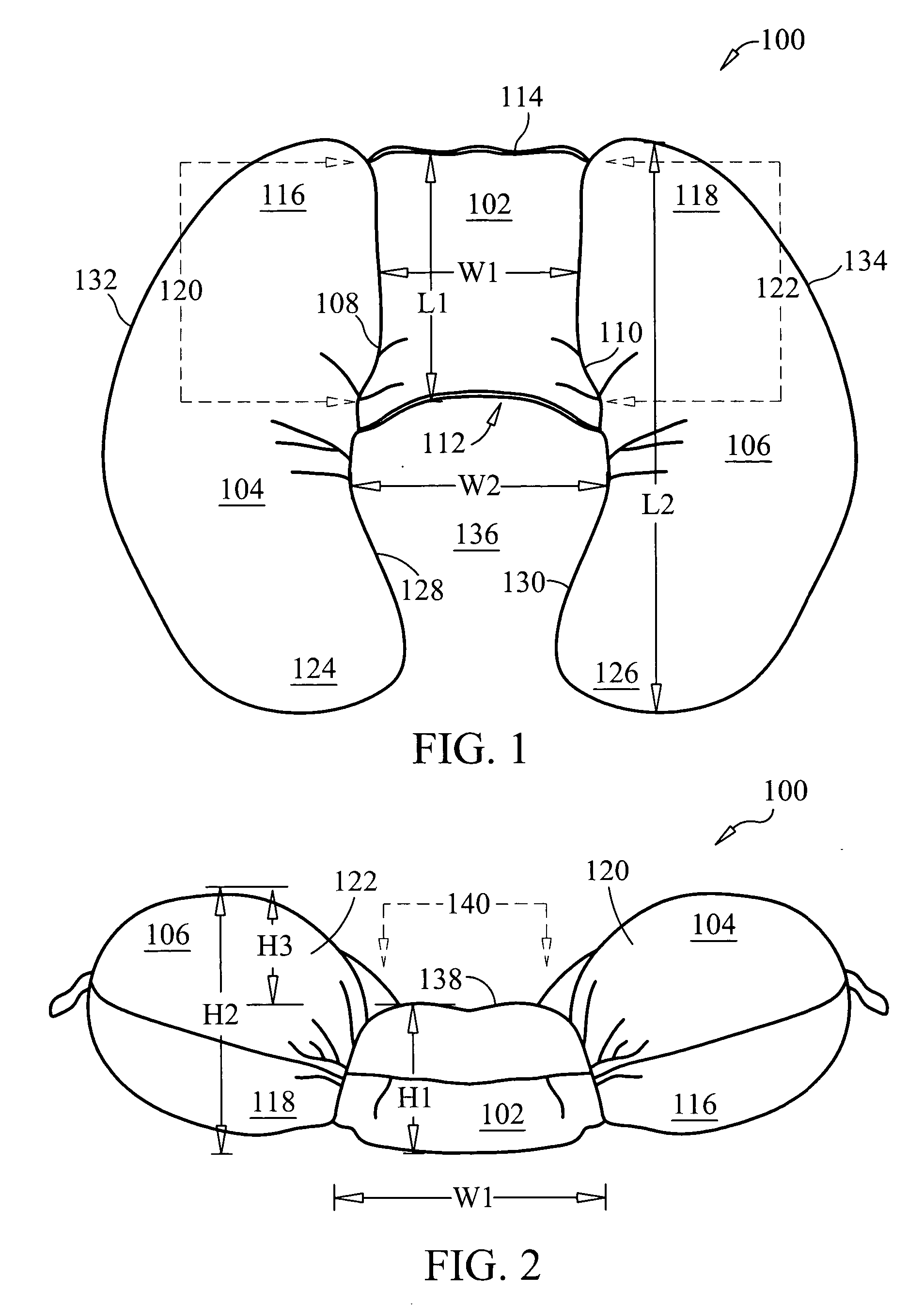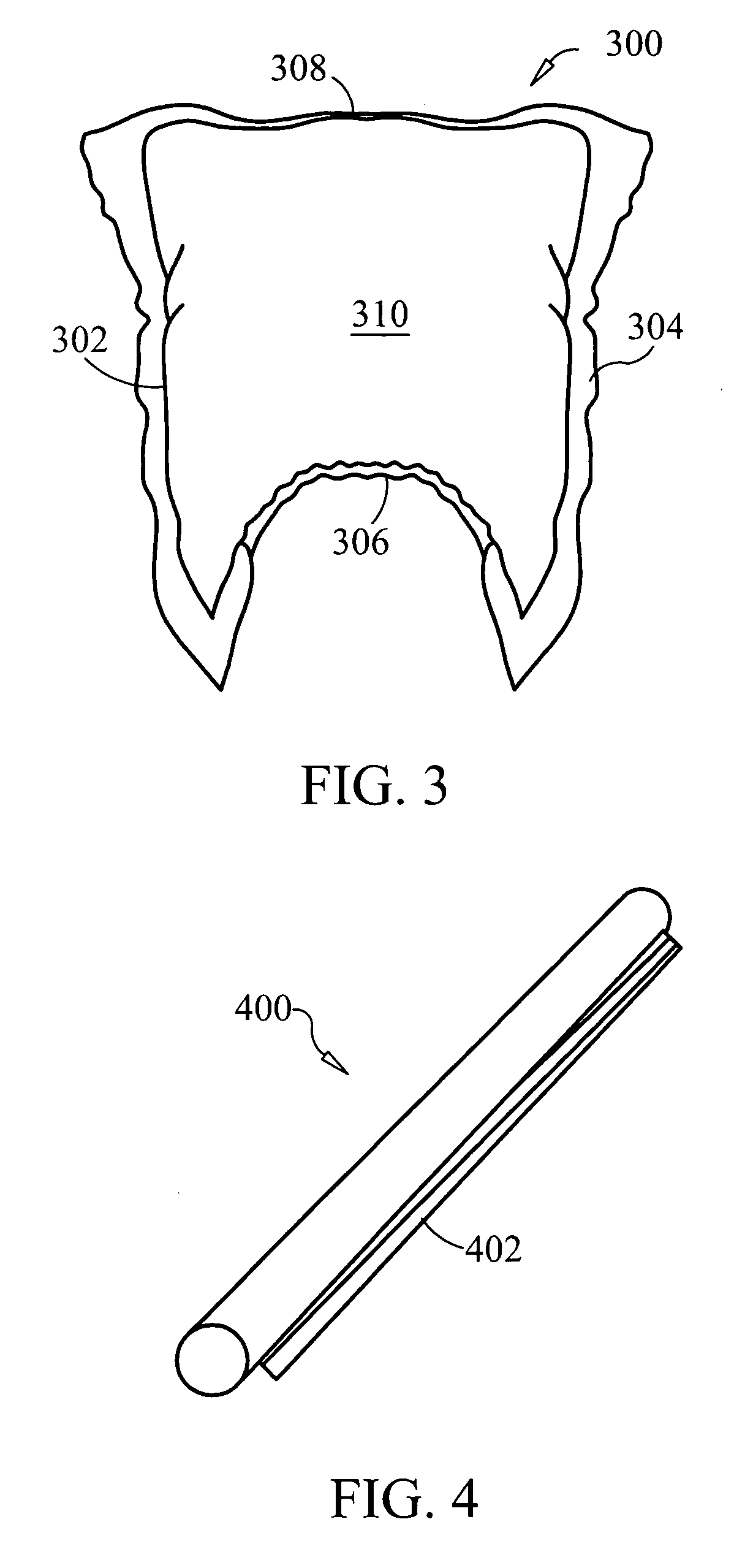Support device for positioning a patient in a prone position
a technology for supporting devices and patients, applied in the field of home and medical devices, can solve the problems of not being able to prevent an infant from rolling, children may also be uncomfortable in a prone position, and the known support apparatus is not capable of providing sustained prone positioning, etc., and achieves the effect of increasing constraint and reducing the width of the channel
- Summary
- Abstract
- Description
- Claims
- Application Information
AI Technical Summary
Benefits of technology
Problems solved by technology
Method used
Image
Examples
Embodiment Construction
[0023] The present invention provides a support structure that is an effective and affordable solution to supporting and maintaining an individual a position, such as an infant in a prone position, although it can be used to support and maintain larger or smaller individuals in differing positions. The support structure has a well-defined center panel providing a support for the individual's chest and / or belly area. Two side arms or side-structures having a height greater than that of the center panel are each secured to an opposing edge of the center panel forming a channel defined by an upper surface of the center panel and at least a portion of inner surfaces of the side arms. The individual can be disposed in the channel resting on the center panel, and gently constrained by the side arms in proximity to the center panel. Thus, the center panel has a width measured between the two side arms that is sized large enough to accommodate the individual's chest and / or belly area, but s...
PUM
 Login to View More
Login to View More Abstract
Description
Claims
Application Information
 Login to View More
Login to View More - R&D
- Intellectual Property
- Life Sciences
- Materials
- Tech Scout
- Unparalleled Data Quality
- Higher Quality Content
- 60% Fewer Hallucinations
Browse by: Latest US Patents, China's latest patents, Technical Efficacy Thesaurus, Application Domain, Technology Topic, Popular Technical Reports.
© 2025 PatSnap. All rights reserved.Legal|Privacy policy|Modern Slavery Act Transparency Statement|Sitemap|About US| Contact US: help@patsnap.com



